As a lifelong NASCAR fan, every year on NASCAR game release day growing up was a holiday in my household. That has somewhat died off in my older age, as real-life got ahead of things and the gaming had to take a back seat. Now my primary focus is on video games again, so the lead up to the next NASCAR game has brought me back to those childhood vibes.
NASCAR 21: Ignition is the first in a line of reconstructed games, building from the ground up with the aim of bringing the fun and enjoyment back to the NASCAR gaming-specific franchise that’s seemingly been missing for the last decade or so. Unfortunately, at the time of writing this, NASCAR 21: Ignition doesn’t seem to be a vision realized.
When it works right, it might be some of the most fun racing I’ve had on a NASCAR video game in years, maybe even ever. It’s just that there’s a narrow window thanks to glitches, incomprehensible logic and missing features.
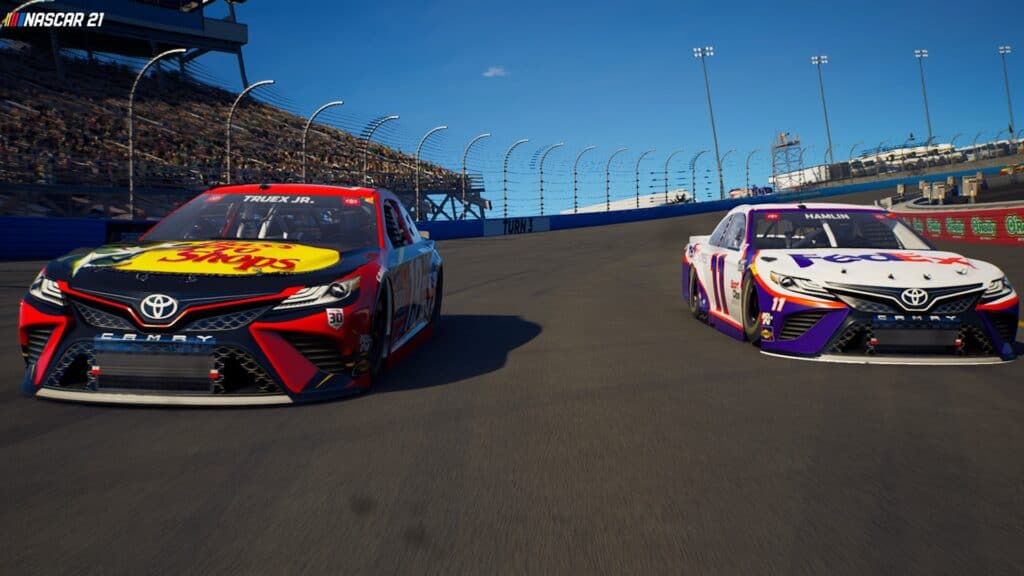
One main takeaway from playing the latest officially-endorsed NASCAR game is the attention to detail. Every track looks, feels and drives as you’d expect. From the simplest concepts, such as track geometry to the complexity of the smaller, finer details. What we got in the Dev Diaries wasn’t just BS, it was legitimately manufactured with the details in mind.
When I’m at Daytona, it’s about the draft. When I’m at Las Vegas, it’s about momentum. If the race is at Phoenix, it’s harder to drive and keep the car underneath. Different tracks drive differently, and that’s a big win. Martinsville lends itself to the bump and run and performs better when running the low line. If you give it too much throttle on corner exit at Sonoma, you might spin out.
Speaking of Sonoma, there are little dusty patches that swoosh away when you drive over them. At Daytona and Homestead, I feel like I could count every single blade of grass in the ballfield.
Every chartered car from the 2021 season is in the game. The paint schemes are on point. The sounds are fantastic. The damage is at least present – not my favorite, but it can be debilitating in the right setting. If you turn on ‘Complex Damage,’ your tire will pop should you make contact with a wall.
The garages are accurately modelled too and can be navigated in a practice session. Quite a shame, then, that there is zero functionality besides being there.
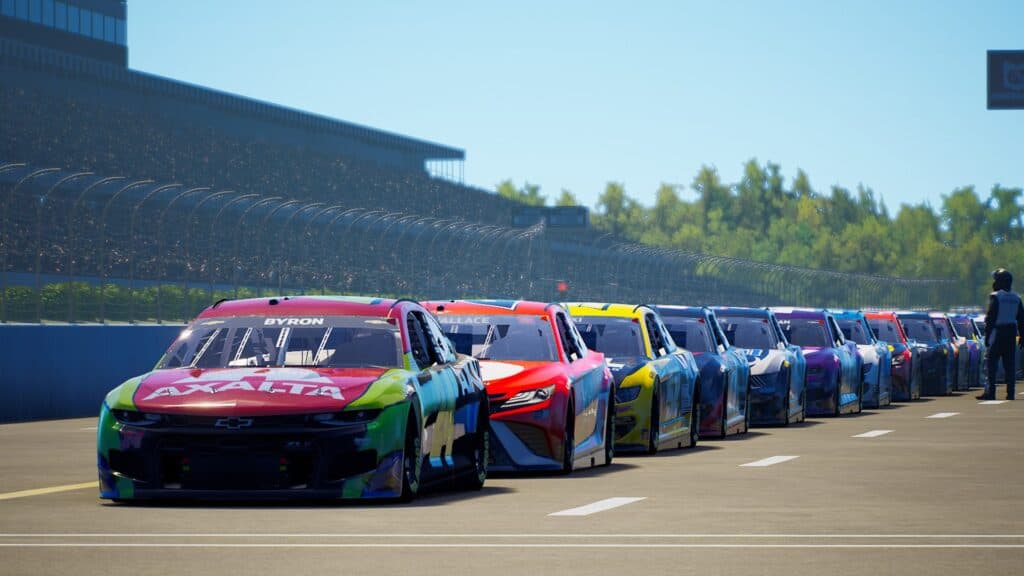
The way the car handles is probably the most important aspect of it all. In its current state, you can find a good feeling on a controller and on certain wheels, but sadly not all wheels, however, as I had a drastically different experience between Logitech and Fanatec devices.
Using a Logitech G29, the wheel felt like it was set to 100 degrees of rotation with the stiffest centering spring I’ve ever felt before. It was like playing with an oversized joystick, so I quickly swapped it out for a PlayStation controller.
My favorite racing came using my Fanatec system, a ClubSport Wheel Base V2.5 with a Universal Wheel Hub and ClubSport V3 Inverted Pedals. While the pedals really only worked from about halfway pushed down to all the way, they were useable – apart from the clutch pedal which isn’t functional here.
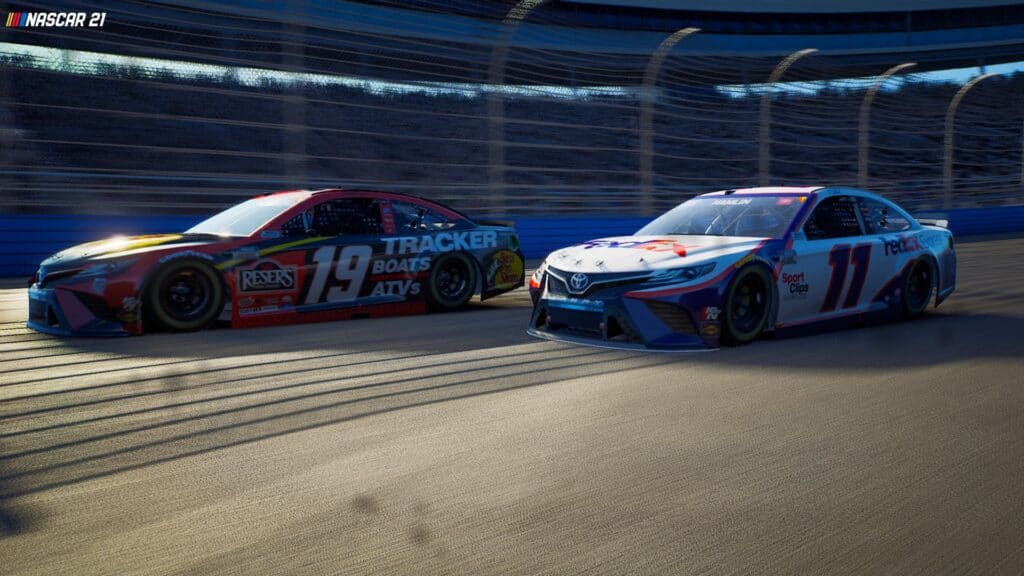
The Fanatec wheel itself felt great in the hands, but unfortunately, the buttons can’t be mapped. During my testing, only two buttons did anything, one shut off the engine (and I couldn’t turn it back on) while the other put the gearbox straight into neutral. The paddle shifters worked, but you couldn’t shift down into neutral naturally, you needed to hit the neutral button, making reversing a chore.
That meant that camera selection, looking around the car, making pit changes, navigating the menus and even pausing the game requires a keyboard on PC or a controller on console nearby at all times.
I preferred the feedback I received from the wheel over a gamepad, as it felt like I had greater control of what I was doing. I could get loose, I could back up the corner for a better exit, and I could race the AI more competitively.
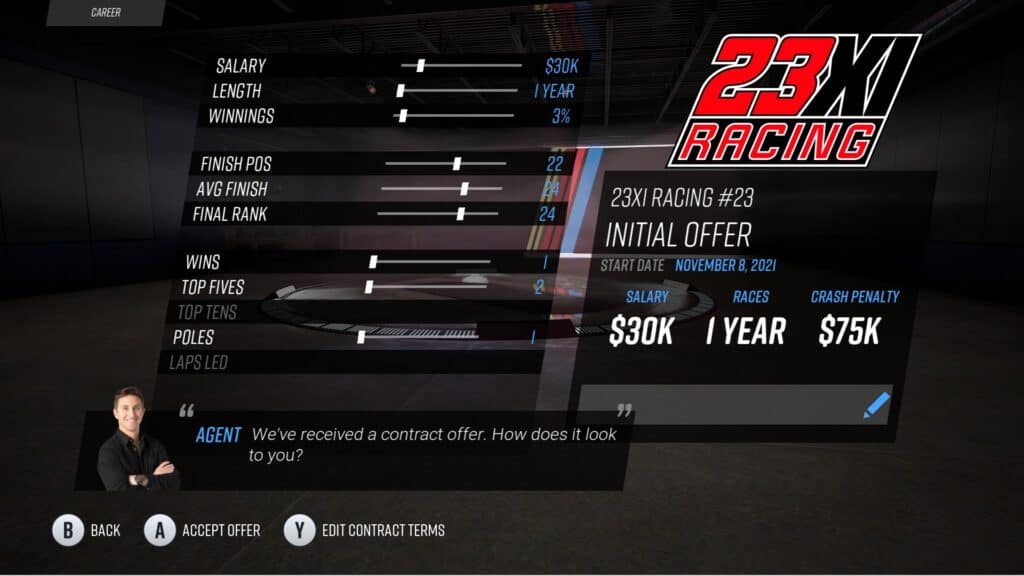
The meat of NASCAR 21: Ignition must be the Career Mode. It’s where those not racing online will spend most of their time playing.
Players can pick any of the teams to race for. However, it does not allow users to pick exactly which car to get into for a multi-car team. As an example, if you choose a top squad, like Team Penske, you’ll be forced into the part-time #33 Austin Cindric ride. On lower-end teams like Rick Ware Racing, you’ll only get the No. 15 of James Davison to take over.
While the 2021 season didn’t actually get practice or qualifying, except a few specific events, every race weekend here offers one practice and one qualifying session on top of the race itself. There are two distinctions, specifically in the qualifying aspect, on a selected number of tracks.
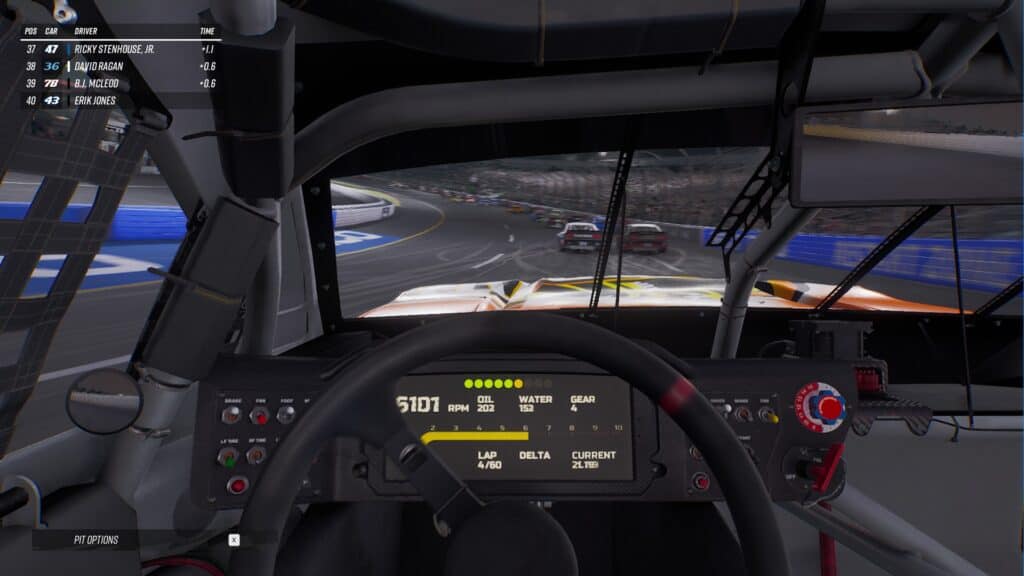
For Road Courses, the two-round qualifying exists. The Top 12 advance to the second round and then the pole is awarded from there. It is also open qualifying, which means you can run into other drivers during this session.
Specifically for the Pocono Doubleheader weekend, the game considers the Top 20 invert for the second race based on the first race’s results. That’s a fantastic nod and terrific addition to the career.
There will be driver turnover as you progress too. By the time you hit 2025, drivers like Kevin Harvick and Ryan Newman will likely be retired and replaced by a NASCAR Xfinity Series or NASCAR Camping World Truck Series driver that’s been added to the game. I had Tanner Gray take over for Ryan Newman in 2022 for one of my career playthroughs.
Despite there being no playable lower series, you can somewhat get a grasp for moving up the food chain if you start out with a lesser team.
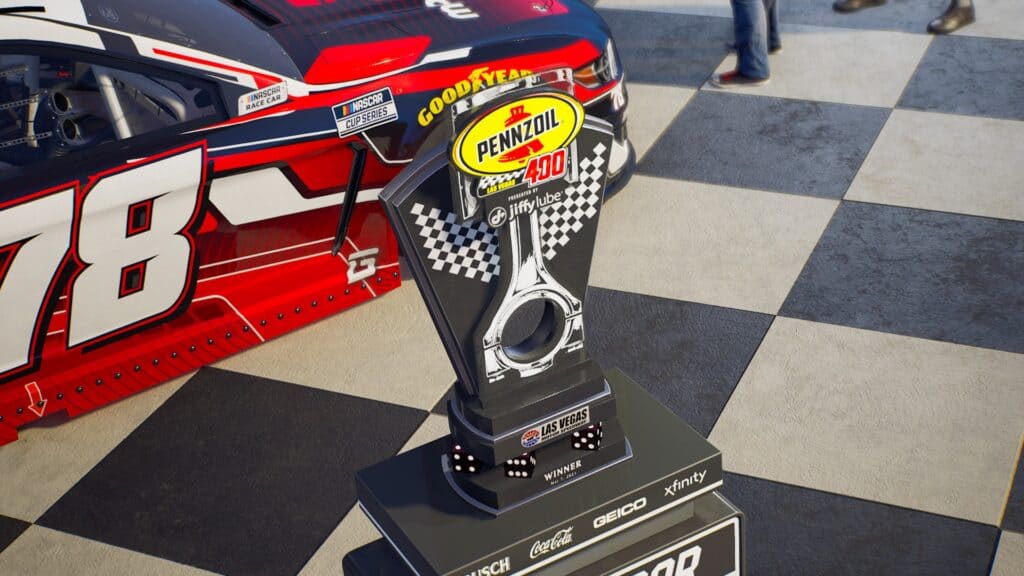
While this is all great immersion, there was an expectation of a more in-depth career than in the previous NASCAR Heat series this replaces. Despite the flaws of the Heat franchise, namely the mundane tasks needed to make it to the top in that career mode, it still had a purpose. I’m struggling to find one in Ignition.
In signing the one contract, even if it’s a shorter one, it will still last through the entire season with the pre-order bonus applied. There are goals to hit but they don’t feel as if they matter. I’ve gone through at least seven quick career seasons across PC and console so far, and not once have I stayed with the same team. When negotiating contracts, you can send any wild demands and there will be at least one team that will take you up on it.
Two facets of the real-world NASCAR playoffs, the actual structure and stage racing, are both notable only by their absence. Stages do exist in the game, but only if you simulate a race weekend.
As for the playoffs, after the 26th race, the points are meant to reset based on the playoff points accumulated in the regular season. When I get to the 27th race in Ignition, it forgets the playoffs exist, erases all the playoff points, and reverts to a non-playoff points structure for three races. When the Round of 12 starts, however, the playoffs are back, but incorrect.
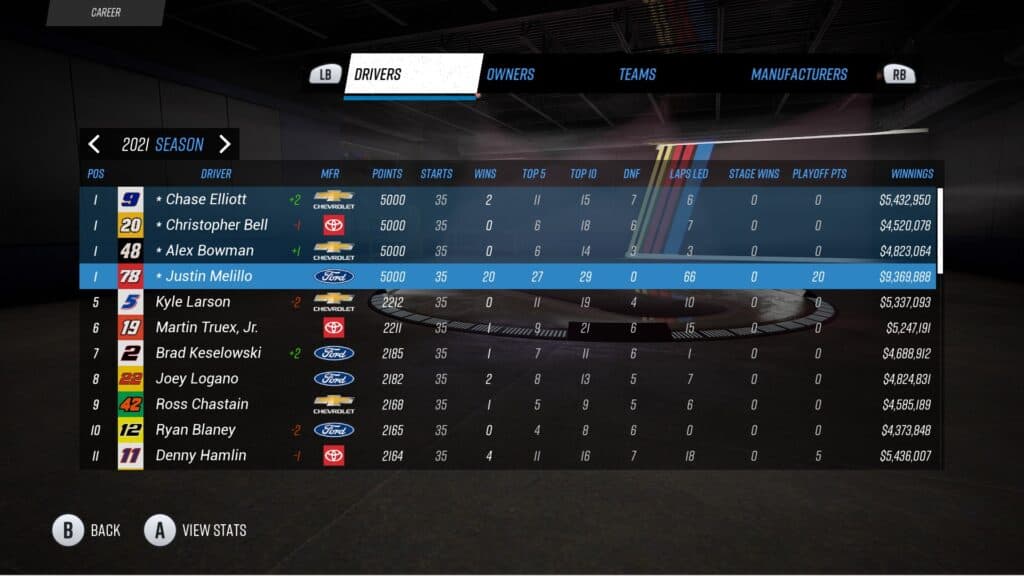
Away from the single-player modes, we have, of course, online options. There are no private lobbies, so it all goes through the matchmaking hopper process. You can simply join a random lobby through the two playlist options – Shake and Bake which tackles superspeedways and intermediates, and Bump and Run which handles short tracks and road courses – or party up with up to 15 friends and then join the hopper system.
I’ve played it with a colleague for fun and then with some pro-level NASCAR Heat drivers from the Pro League and Ultimate Summer Showdown, which was only slightly more serious.
The actual racing, pre-release with small lobby numbers and when everything works properly, is top-notch. You can get physical and the connection handles it like a champion. I could move others and they could move me. There wasn’t any type of net code error or random spinning from contact.
In the races with the Pro drivers, there were times where we were four or five wide racing for the lead at tracks like Michigan and Texas. We ran some road courses, superspeedways and even had a few on some technical ovals.
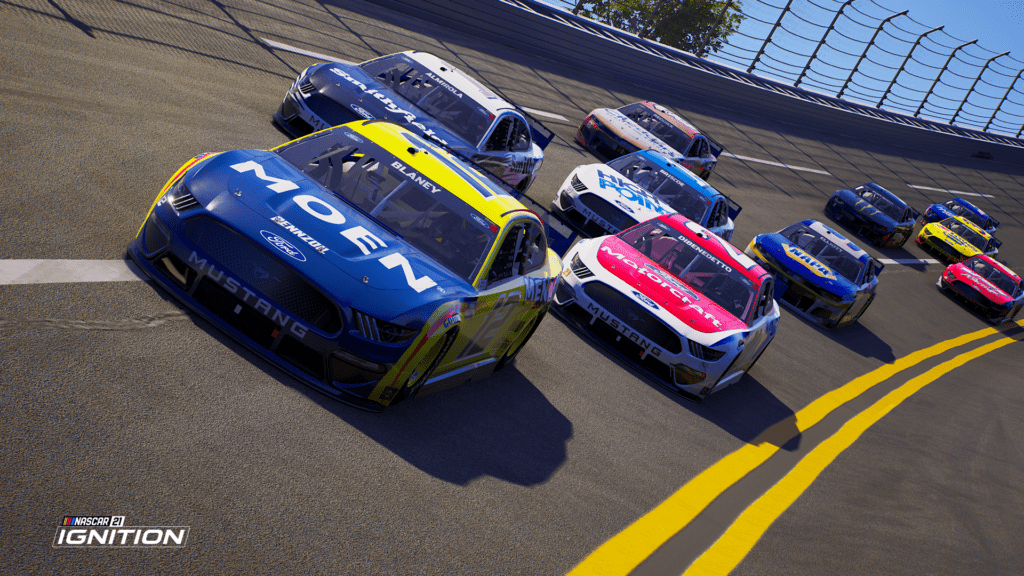
There was one race in particular at Michigan where I built up a run out of the final corner on the last lap. I was able to make the move to the lead for a moment, but a bad side draft hooked me around. It was so realistic that I didn’t even mind that it was a loss. It was just so intense and cool to be a part of it.
However, the time it takes for even two people to link up is greater than the ‘Long John’ at Pocono Raceway. When you do make it into a lobby, you have little say in the setup other than to vote for tracks. Want to race with your friends at Daytona? Well, you better hope it’s one of the two choices, and if it isn’t, pray that the random track vote button gets you there.
The actual mechanics of the multiplayer lobby are askew currently. Every time we loaded into a race, there would be a two-minute countdown timer on the top left of the race options tablet, but it would just kick us forward to race after about 20 seconds with no warning. You’re also in control immediately, a big contrast from the offline gameplay where you must frustratingly wait until the start/finish line.
These races are also set at the two percent distance length, effectively killing any type of serious online strategy. Plus, there are no rankings, so it will likely be a free-for-all now it’s post-launch.

Outside of the main modes, you also have the Paint Booth – something that’s highlight anticipated among the NASCAR gaming community.
It can yield beautiful results, but those schemes will only be there for them to use offline in a single-player setting. There is no way to import logos, so they must be made from scratch with polygons. That takes time and patience, something someone like me doesn’t have, but the output can be spectacular.
There are no pre-made bases either, which dominated previous NASCAR Heat games, but it would have been nice to see a mix between the two, honestly.
Elsewhere, there are several elements that suggest that NASCAR 21: Ignition is far from finished.
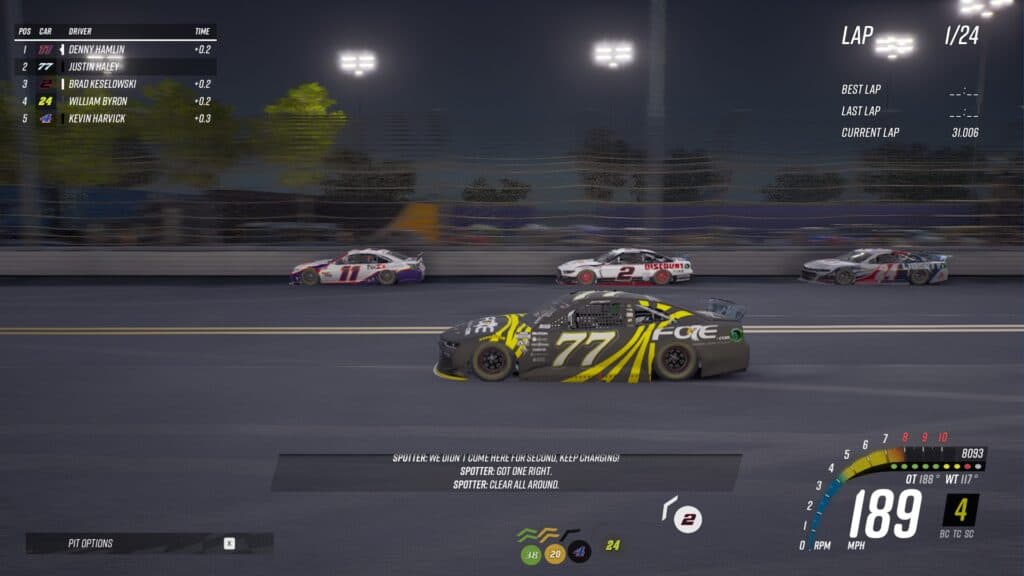
The in-game spotter, voiced by 23XI Racing’s Freddie Kraft, is unfortunately annoying and wrong most of the time. He’ll clear you when you aren’t clear. He knows how to lay down a sick rap when you try to pass a pack of cars. When fuel is in play, he tries to get you to pit way earlier than you need to.
Pit options can only be changed under green while on track, which is a little cumbersome. Grill tape can be set from anywhere from 100 (fully taped) to… negative 5? Is that like punching a hole in the nose or something? Similarly, tire pressures can vary from 10 PSI to 99.5 PSI on each tire individually, both quite extreme.
Perhaps the biggest letdown is the performance of your rival drivers. The AI is madder than a box of frogs at times. Sometimes during race restarts, they spear wildly across the track. If you spin out, there doesn’t seem to be any form of avoidance or awareness of your presence. They just pile right in like a group of Lemmings falling off a ledge.
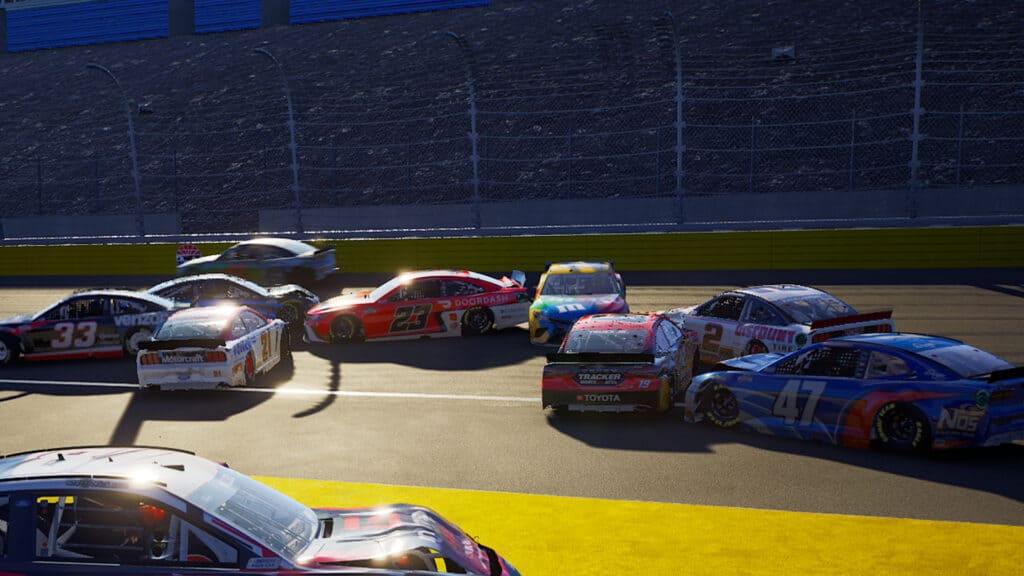
The most important part about a game is that it is playable. NASCAR 21: Ignition gets the job done in this sense, but it takes fine-tooth combing of the options to get the right settings before the fun begins.
If the subsequent updates can fix the bugs, add in depth, and keep improving through the offseason, NASCAR 21: Ignition has the potential to be a great start to this new gaming franchise.
If these fixes are left until NASCAR 22, however, many NASCAR gaming fans will be left wanting. It’s what doomed NASCAR The Game. It’s what doomed the Heat series. Don’t let it doom the Ignition series.
If you’ve picked up NASCAR 21: Ignition on PC, PS4 or Xbox One, check out our beginner’s guide before you jump in. Full disclosure – Traxion.GG is part of Motorsport Games and the Motorsport Games family of brands. All Traxion.GG content is editorially removed from Motorsport Games video game development and created by a dedicated team.
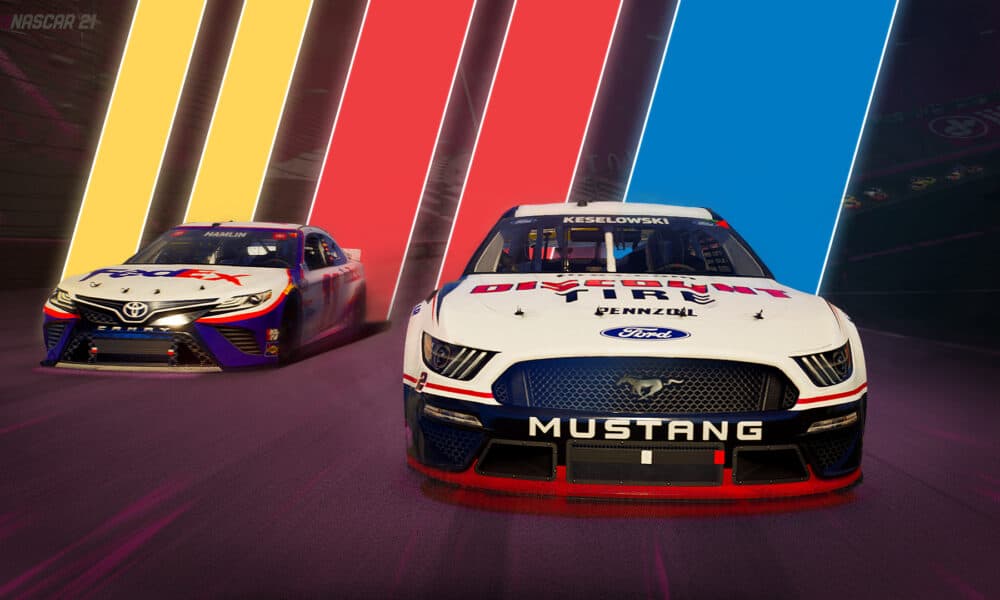



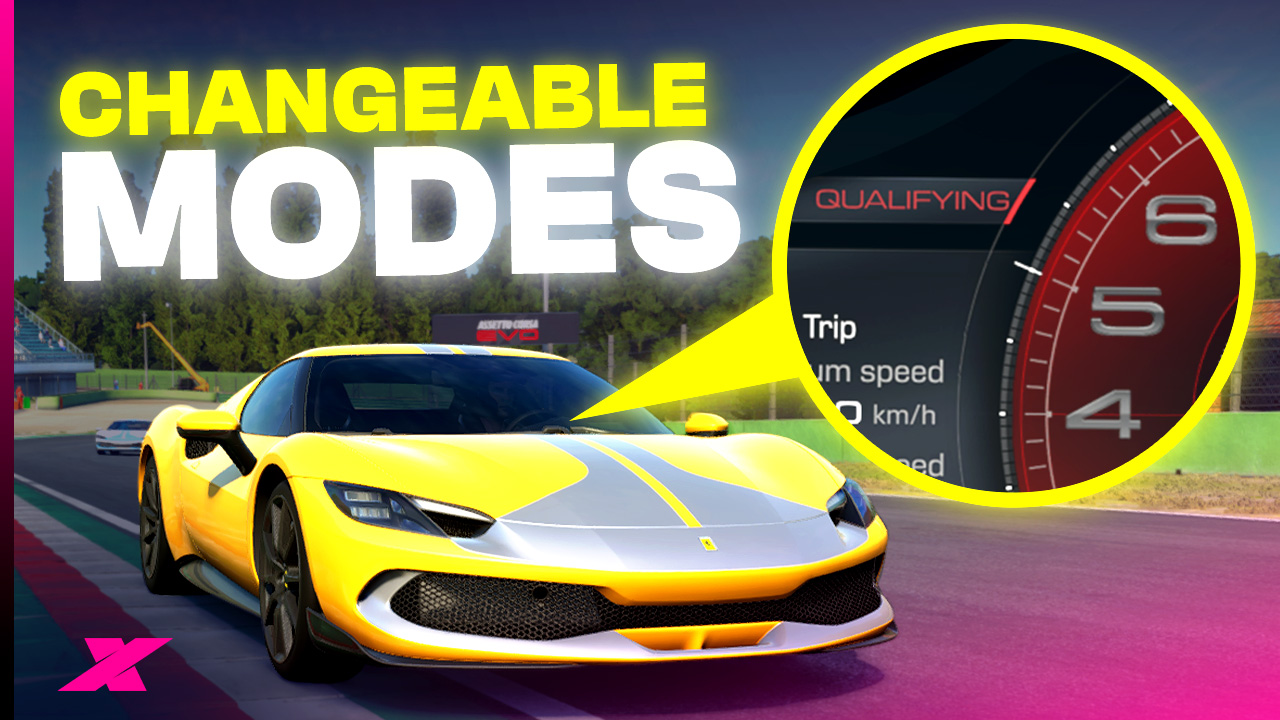
Chat with the Community
Sign Up To CommentIt's completely Free